The modern city and its surrounding built environment was an ongoing theme of Muybridge's work since he returned from his first trip to Yosemite. Muybridge photographed San Francisco and its surrounding bay area most extensively, taking over 1000 shots between 1867 and his departure from the region in 1881 (Haas, 1976, p14). However, he also travelled to cities such as Washington, New York and Chicago throughout his working life - photographing some of the most significant contemporary examples of the built environment.
Indeed, when we study this body of Muybridge's work, we recognise one particular theme which runs through its entirety: Muybridge always photographed buildings and scenarios which had a particular social and cultural relevance attached to them at the time. It is perhaps for this reason Muybridge's urban photography appealed so much to his contemporary audience, just as his landscape work had done before it.
In the case of San Francisco, Muybridge swamped his audience with images of banks, opera houses, docks, government buildings and modern street intersections; as well as the elaborate homes of some of California's richest capitalists, including Leland Stanford.
Muybridge also created 2 large scale 360 degree panoramas of San Francisco in 1877-8 and spent several months documenting important military and governmental installations surrounding the city. Many of these latter photographs were sold to the military, and Muybridge even took on a commission direct from the government to photograph lighthouses of the Pacific Coast, which were necessary to ensure the safety of new international trade routes (Haas, p21).
Each of these photographs of San Francisco and its surrounding area documents aspects of urban life which signified the most important aspirations of American life in the nineteenth century, something particularly important for California.
Due to the gold rush, California was an incredibly wealthy state with a gleaming capitalist future ahead of it. However, as a state it was also extremely new and attempting to establish its identity, only having been taken from Mexico in 1846. Photographs reflecting the most positive and victorious aspects of modern capitalist life such as wealth, industry, international trade and modern transport - as well as highly visible military and governmental security - would reflect, and might even help consolidate California's embryonic identity of capitalist industrialisation and urban growth.
As we have seen from our introduction, many theorists view photography as a medium which embodies truth value as a result of its graphic nature. If this is the case, then photographing the wealth and grandeur of San Francisco might have actually helped stabilise the identity of this brand new state and city, inscribing its character concretely as progressive, capitalist, and most importantly - American. The government certainly saw something in this new medium of representation: buying and even commissioning Muybridge's work for the public as abovementioned.
And just as Muybridge's California imagery may have helped secure and advertise a positive reputation for the state, his urban photography elsewhere in the US arguably achieved the same thing for cities such as Washington and New York. Here Muybridge photographed similar scenes signifying economic prosperity and cultural progression, such as modern urban city views and buildings of cultural importance such as the White House and the hugely symbolic Statue of Liberty.
Muybridge's photography of Chicago served a slightly different purpose, by documenting the Columbian Exposition in 1893. However this was the largest and best attended world fair yet, and was therefore extremely important both to boost optimism in the American population, and to advertise America as the global leader it was fast becoming.
Overall then, we can see that where Muybridge's rural landscapes satisfied one primary concern of the Californian people, his urban photography addressed another. Both, however, represent Muybridge as a highly entrepreneurial individual focused on making the modern world work for him, and therefore as a quintessentially American man in the 19th century.
Select Bibliography
Haas, Robert Muybridge Man in Motion (Berkeley, University of California Press, 1976)
Hill, Paul 'The Panorama of San Francisco from California Street Hill' in Stephen Herbert ed. Eadweard Muyrbidge: The Kingston Museum Bequest (Hastings, Projection Box, 2004)
Sandweiss, Eric 'Claiming the Urban Landscape: The Improbable Rise of an Inevitable City' in D. Harris ed. Eadweard Muybridge and the Photographic Panorama of San Francisco (Montreal, Canadian Center for Architecture, 1993)
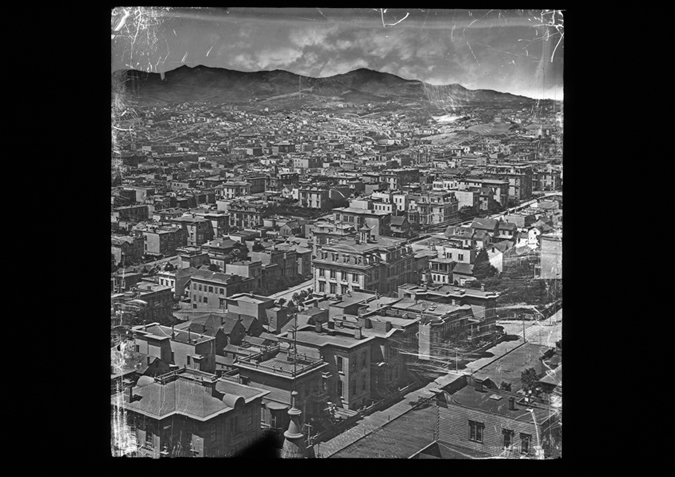
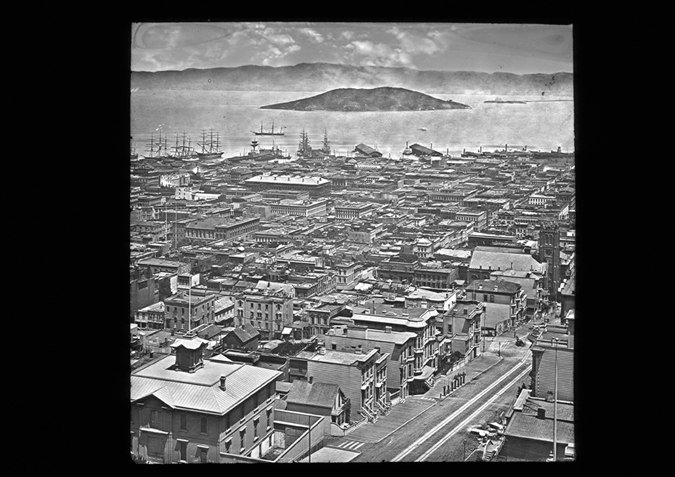
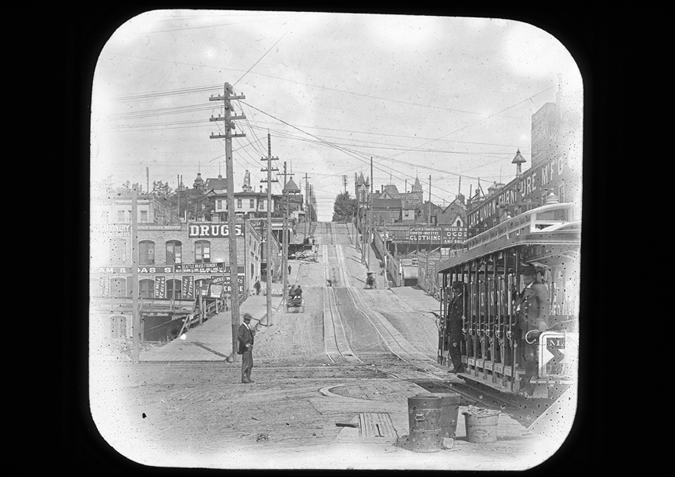
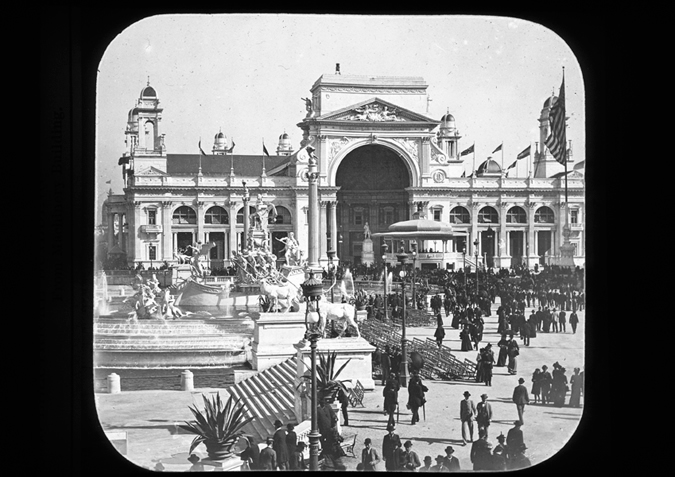
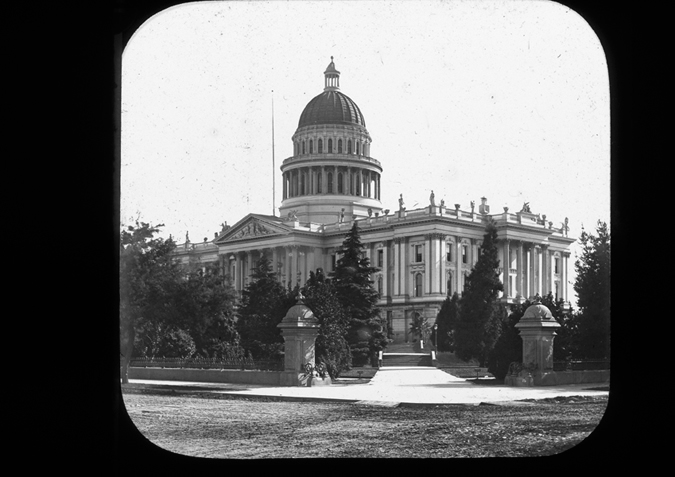
 Introducing Muybridge
Introducing Muybridge Landscape
Landscape The Modern City
The Modern City Transport and Trade
Transport and Trade Foreign Bodies
Foreign Bodies Animal in Motion
Animal in Motion Human Figure in Motion
Human Figure in Motion Zoöpraxography
Zoöpraxography